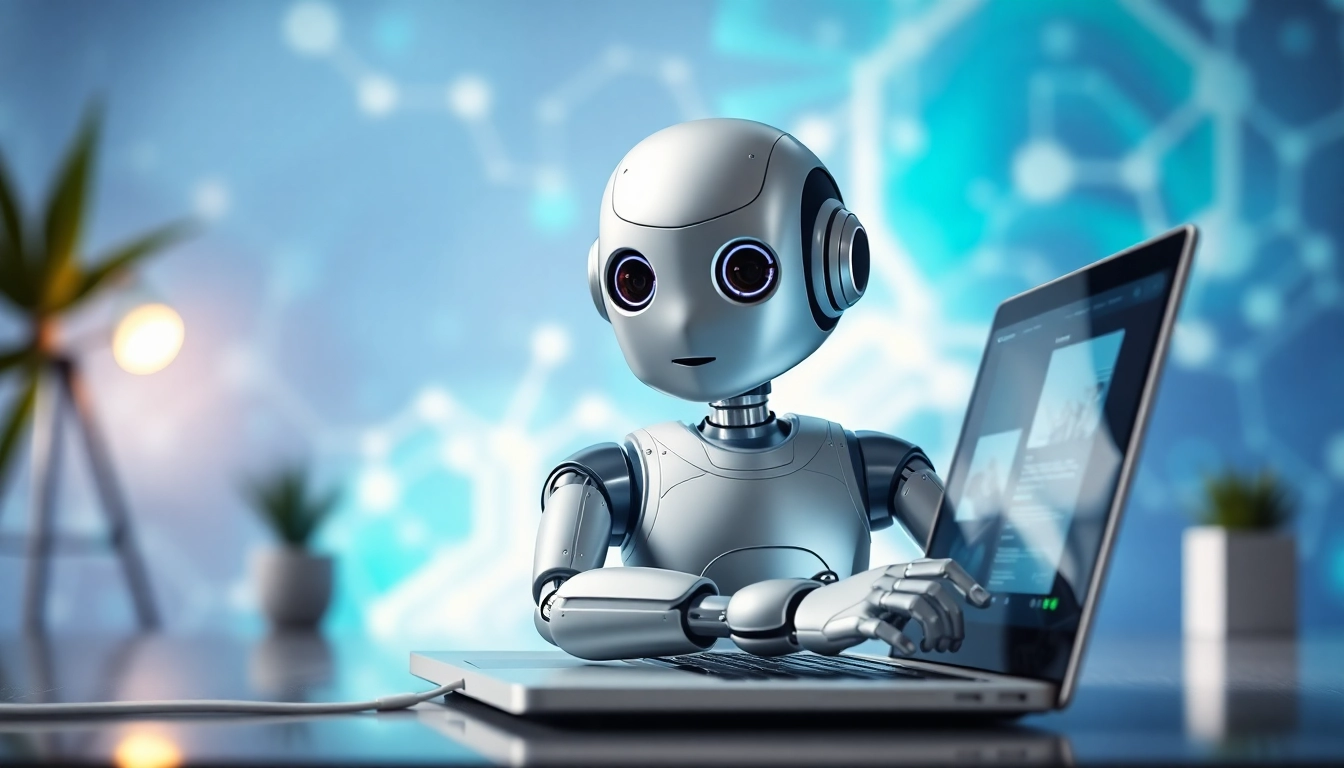Understanding AI Bots for Websites
What is an AI Bot for Websites?
An AI bot for websites is an advanced software application designed to facilitate automated interactions with users in real-time. These bots leverage artificial intelligence to understand and respond to inquiries, engage users in conversation, and assist in various tasks such as customer support, booking services, and more. They can be integrated seamlessly into websites and provide visitors with immediate assistance, enhancing the overall user experience. The integration of AI bot for websites is becoming increasingly essential as businesses strive to meet customer demands efficiently and effectively.
How AI Bots Improve User Experience
AI bots enhance user experience by providing immediate responses to inquiries, personalizing interactions, and offering 24/7 service. This immediate accessibility ensures that customers do not have to wait for assistance, which can significantly reduce bounce rates and increase customer satisfaction. Additionally, these bots use machine learning algorithms to analyze user behavior and preferences, enabling them to tailor interactions based on previous queries or purchases.
The Technology Behind AI Bots
The technological backbone of AI bots revolves around natural language processing (NLP), machine learning, and data analytics. NLP allows bots to understand and process human language, enabling them to respond more naturally to user inquiries. Machine learning enables the bots to learn from past interactions and improve response accuracy over time. Furthermore, AI bots analyze large sets of data to identify patterns and trends, adapting to user needs more effectively.
Benefits of Implementing AI Bots
Increased Engagement through Personalization
One of the primary benefits of using AI bots on websites is increased engagement through personalized experiences. By analyzing user data, AI bots can offer tailored content, product recommendations, and specific responses that resonate with individual visitors. Personalization not only helps in retaining customers but also fosters a deeper connection between the user and the brand.
24/7 Customer Service Capabilities
AI bots operate around the clock, providing customers with the ability to interact with brands at any time. This 24/7 availability significantly enhances customer satisfaction and convenience, as users can receive assistance outside regular business hours. Moreover, this continuous service model allows businesses to manage a higher volume of customer interactions without overwhelming human staff.
Cost-Effectiveness of AI Solutions
Implementing AI bots can lead to substantial cost savings for businesses. By automating routine tasks and inquiries, organizations can reduce the need for extensive customer service teams. This not only minimizes payroll costs but also allows human agents to focus on more complex issues that require human intervention. Multiple industries have observed a marked increase in operational efficiency due to the integration of AI bots.
Challenges in Deploying AI Bots
Common Implementation Pitfalls
Despite their benefits, deploying AI bots can present several challenges. Common pitfalls include inadequate training data, lack of clear objectives, and poor integration with existing systems. Businesses must ensure that they provide sufficient training data to the bots, set clear expectations for their performance, and ensure that the bots can communicate effectively with current platforms for optimal functionality.
Ensuring Reliability and Accuracy
For AI bots to be successful, they must deliver reliable and accurate responses. This requires continuous monitoring and updating of their algorithms to prevent the dissemination of incorrect information. User feedback is essential for identifying inaccuracies, and businesses should be proactive in refining bot responses based on real interactions.
Addressing User Concerns about Privacy
Data privacy is a significant concern for users interacting with AI bots. Companies must establish robust privacy policies and communicate these to users prominently. Ensuring compliance with regulations such as the General Data Protection Regulation (GDPR) is crucial. Building trust through transparency regarding data collection and usage can alleviate customer concerns and enhance bot acceptance.
Best Practices for Using AI Bots on Websites
Optimizing Interaction Flows
Creating an efficient interaction flow is vital for a successful AI bot implementation. Businesses should map out typical user journeys to ensure that bots engage users at appropriate touchpoints. This includes understanding frequently asked questions, common user intents, and potential follow-up queries to streamline the conversation and enhance user satisfaction.
Integrating AI Bots with Existing Systems
To maximize the potential of AI bots, businesses need to integrate them with existing systems such as CRM software, databases, and other customer service tools. This integration enables bots to retrieve user information and provide personalized responses, making interactions both timely and relevant. Compatibility with existing systems ensures that both human and AI agents have access to the same customer data.
Monitoring Performance and User Feedback
Continuous monitoring of an AI bot’s performance is crucial for improvement. Businesses should regularly analyze metrics such as response accuracy, user engagement rates, and customer satisfaction scores. Gathering user feedback post-interaction can provide insights into areas for enhancement, allowing organizations to iterate and develop their bots efficiently.
Future Trends in Website AI Bots
Advancements in Natural Language Processing
The field of natural language processing is advancing rapidly, with significant improvements in comprehension and context understanding. Future AI bots will be capable of handling more complex inquiries and maintaining more coherent conversations over extended interactions. These advancements will lead to a more human-like interaction style that can cater to intricate customer needs.
AI Bots in E-commerce and Beyond
The integration of AI bots in e-commerce is gaining traction, with bots increasingly being used for personalized recommendations, upselling, and customer support. As technology evolves, these bots will be able to predict trends and consumer behavior more accurately, providing businesses with strategic advantages. Potential applications will span various sectors, including healthcare, education, and finance, where personalized and responsive service is crucial.
Preparing for the Future of AI in Web Design
The future of website design will increasingly include AI functionalities. Designers must consider how AI bots will integrate into user experiences, ensuring seamless interactions. Emphasis on user experience will drive automation and smart design choices, as businesses strive for intuitive, dynamic website interfaces that enhance user engagement and satisfaction.



